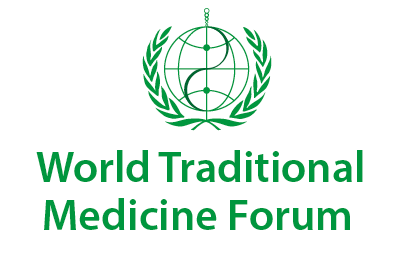
 i_need_contribute
i_need_contribute
Salah A Ismail, Hossam M Atef, Mohamed E Abuelnaga, Haddier M Midan
Department of Anesthesia, Intensive Care and Pain Management, Faculty of Medicine, Suez Canal University, Ismailia, Egypt
Correspondence: Mohamed E Abuelnaga
Department of Anesthesia, Intensive Care and Pain Management, Faculty of Medicine, Suez Canal University, The Ring Road, P.O. Box: 41522, Ismailia City, Egypt
Tel +201004150671
Fax +20643208543
Email Mohamed_abuelnga@med.suez.edu.eg
Purpose: Acupuncture ameliorates several pain disorders including postoperative pain. This can help to decrease the need for postoperative analgesics. We aimed to evaluate the effectiveness of acupuncture as an adjuvant scheme reduce both intraoperative and postoperative analgesia needs in children undergoing adenotonsillectomy.
Methods: This was a randomized controlled single-blinded trial that was performed over sixty children scheduled for adenotonsillectomy. They were randomly allocated to either an intervention group that received general anesthesia plus acupuncture or a control group which received general anesthesia alone. The primary outcome was the measurement of postoperative pain scores. Secondary outcomes included measurement of time to the first request of postoperative analgesia, the number of children requesting postoperative analgesics in the first 2 hours, the incidence of postoperative complications including postoperative nausea and/or vomiting (PONV), and emergence agitation (EA).
Results: AThe Wong-Baker FACES pain scores at rest and on swallowing were significantly lower in the intervention group than in the control group postoperatively. The time to the first request of postoperative analgesia was delayed in the intervention group versus the control group, with less number of patients who have requested additional analgesia during the first 2 hours postoperatively. Postoperative agitation was lower in the intervention group versus the control group patients. However, the incidence of PONV was not statistically different between study groups.
Conclusion: Combined acupuncture with general anesthesia in children undergoing adenotonsillectomy provided better postoperative pain control with no adverse effects.
Keywords: acupuncture, adenotonsillectomy, postoperative pain
What is already known about the topic: acupuncture is a well-known modality for both acute and chronic pain disorders. Several studies showed the efficacy of acupuncture in children undergoing adenotonsillectomy regarding postoperative analgesia, vomiting, and agitation.
What new information this study adds: in our study, we used combined preoperative unilateral different body and ear acupuncture points targeting several beneficial effects like perioperative analgesia, reducing PONV, and EA. We used manual stimulation for the body acupuncture needles. Acupuncture needles were left in place till the end of surgery.
What we found in our study: we found that acupuncture is a beneficial adjuvant to general anesthesia. It provides good perioperative pain control in children undergoing adenotonsillectomy under general anesthesia. Acupuncture can be used safely in children.
Traditional Chinese Medicine hypothesizes that human bodies have an energy force called “Qi”. This energy is continuously flowing throughout the body in pathways called “meridians”.1,2 It is thought that disorders in the flow of Qi can cause pain and sickness. Acupuncture is believed to restore the balance of the flow of Qi when particular points “acupoints” along the meridians are stimulated.1,2
Major postoperative pain in children can slow recovery, reduce oral intake, induce disturbed sleep, and behavioral changes.3 Tonsillectomy is one of the most frequently practiced surgical operations in the ear, nose, and throat with a high occurrence of postoperative pain despite several postoperative analgesic options.4–6
Postoperative swallowing pain was found to continue for three days in children following tonsillectomy7 and can extend up to two weeks in children undergoing tonsillectomy and adenoidectomy.8 Dorkham et al9 have reported several barriers to postoperative pain management in children. The most important of these factors are parental inability to diagnose or assess pain, paternal false beliefs about analgesic drugs,10 child refusal to receive medications, low analgesic drug efficacy, insufficient dose or formulation;11 and poor discharge instructions.8,10
Opioid analgesics should be used with caution especially in children with obstructive sleep apnea.12 Although non-steroidal anti-inflammatory drugs are effective in pain management without an increased incidence of postoperative bleeding, the possibility of severe bleeding is questionable.12 Acupuncture may be used effectively as the adjunctive or principal form of alternative care.13
Several systematic reviews of studies done on untoward effects of needle acupuncture in several medical disorders concluded that it will be safe when practiced by skilled professionals.1,14,15
Acupuncture is believed to reduce pain intensity, allowing for decreased analgesic doses.16 The mechanism behind acupuncture analgesia is not precisely known. However, it may reduce pain by activating different neurotransmitters or modulators as opioid peptides, norepinephrine, serotonin, and adenosine, or through stimulation of endogenous pain inhibitory pathway.17
Several previous studies were done to evaluate the effectiveness of acupuncture as adjuvant analgesia in children undergoing tonsillectomy with or without adenoidectomy. One study used combined body and auricular acupuncture with electro-stimulation,18 while others used body acupuncture alone without needle stimulation.4,19–21
This study was conducted to evaluate the effectiveness of preoperative unilateral combined body and auricular acupuncture with manual stimulation of body acupuncture needles as an adjuvant for pain relief following adenotonsillectomy aiming to reduce postoperative pain in the pediatric age group. The primary objective was to assess the effect of acupuncture on postoperative pain scores for the first two hours after surgery following adenotonsillectomy. The secondary outcomes were the effect of acupuncture on time to the first request of postoperative analgesia for the first 24 hours, the number of patients requesting postoperative analgesia in the first 2 hours, postoperative complications including EA and PONV. We hypothesized that acupuncture will reduce postoperative pain scores in the pediatric age group following adenotonsillectomy.



